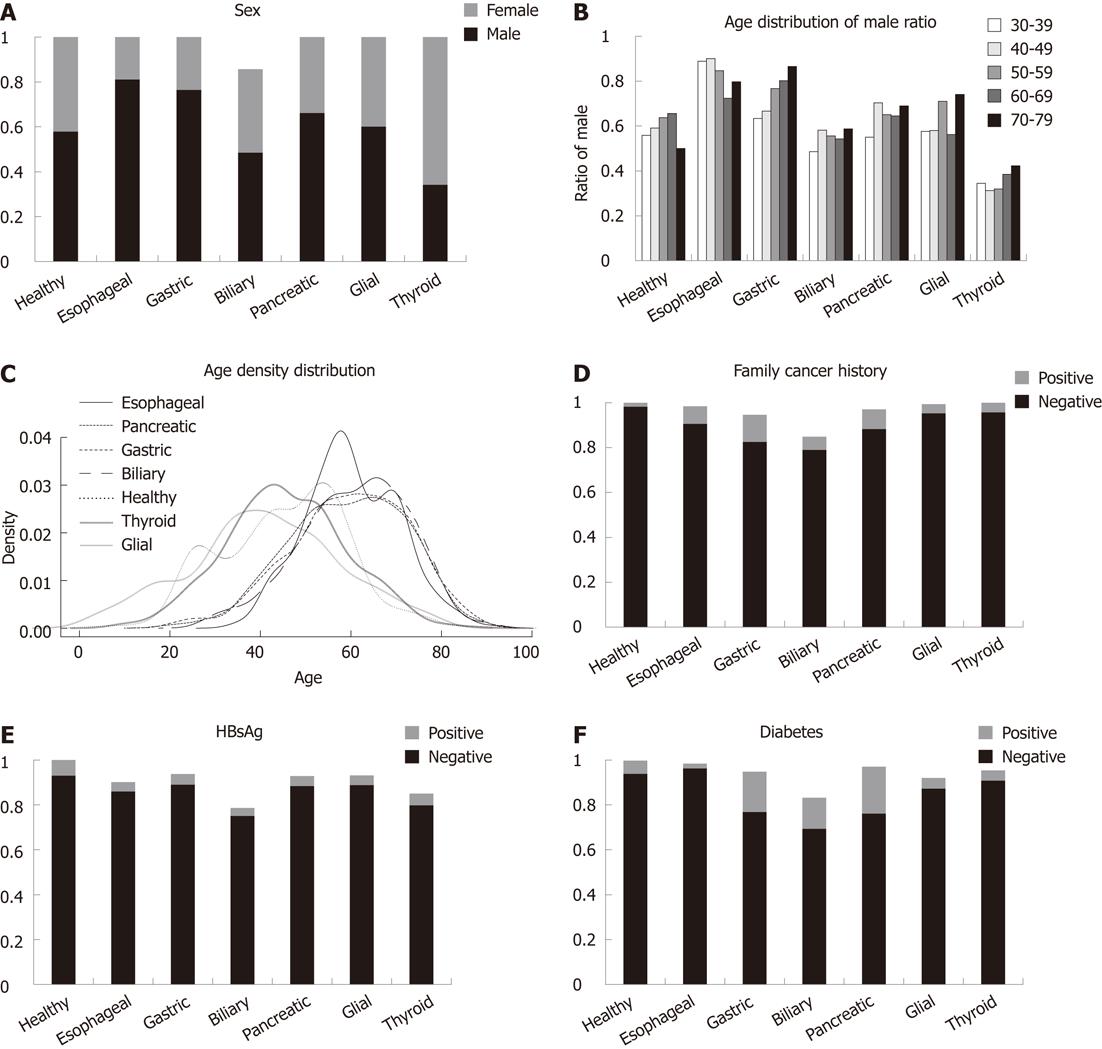Copyright
©2012 Baishideng Publishing Group Co.
World J Gastroenterol. Feb 14, 2012; 18(6): 563-569
Published online Feb 14, 2012. doi: 10.3748/wjg.v18.i6.563
Published online Feb 14, 2012. doi: 10.3748/wjg.v18.i6.563
Figure 1 Distributions of clinical traits among different patient groups.
A: Sex distribution in different patient groups. Blank areas in this figure represent missing values. Y axis represents sex composition. Grey color represents female individuals, black color represents male individuals; B: Proportion of male patients in different age groups with various cancers, and in healthy controls. Different colors represent different age groups. Y axis represents male ratio; C: Age distribution of different patient groups; D: Frequency of family cancer history (positive or negative) among different population groups; E: Proportion of population with HBsAg among different population groups. Grey color represents HBsAg-positive groups. Black color represents HBsAg-negative groups; F: Proportion of patients with diabetes among different population groups. Grey color represents diabetes-positive groups. Black color represents diabetes-negative groups.
Figure 2 Fraction of each blood type with different population groups.
Different colors represent different blood types (AB, A, B, or O), Blank areas in this figure represent missing values.
- Citation: Gong Y, Yang YS, Zhang XM, Su M, Wang J, Han JD, Guo MZ. ABO blood type, diabetes and risk of gastrointestinal cancer in northern China. World J Gastroenterol 2012; 18(6): 563-569
- URL: https://www.wjgnet.com/1007-9327/full/v18/i6/563.htm
- DOI: https://dx.doi.org/10.3748/wjg.v18.i6.563














